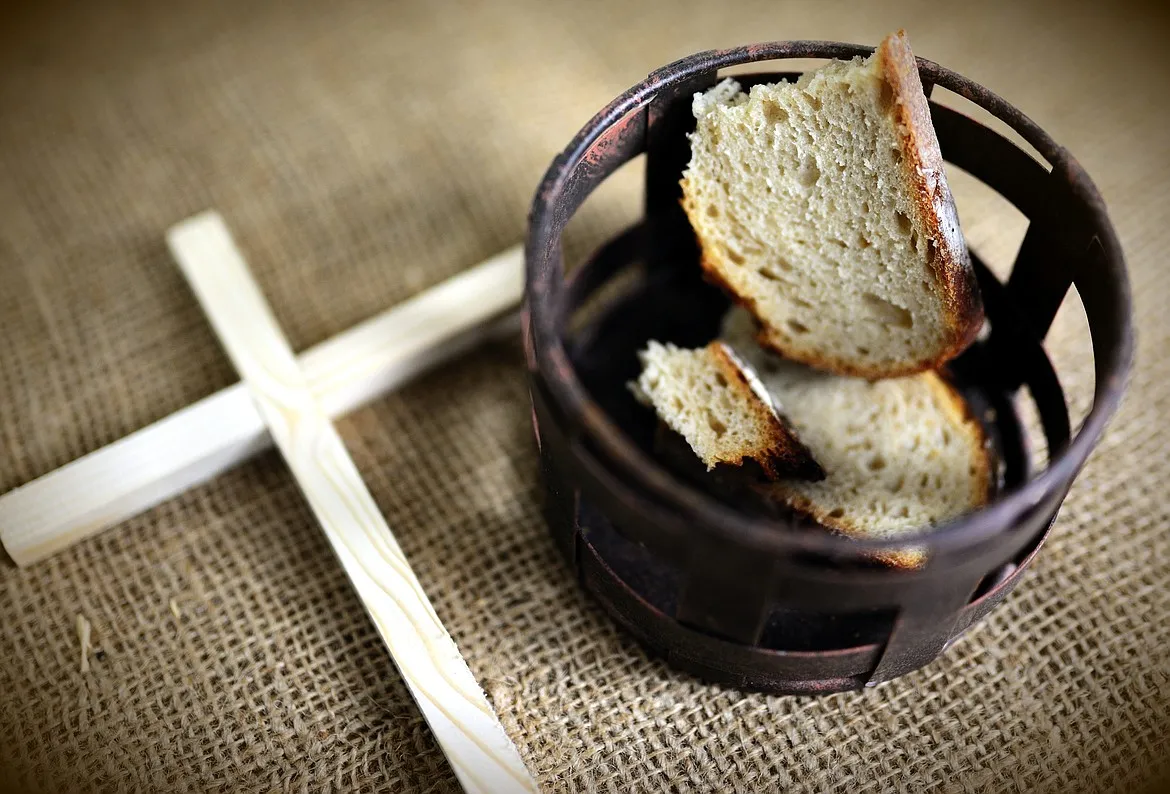Suburban Savings: Naperville vs Chicago Grocery Comparison for Ethnic Foods
Discover where you'll find the best prices on ethnic foods - Chicago's diverse neighborhoods or suburban Naperville stores. Our comprehensive price comparison reveals surprising savings opportunities.


Suburban Savings: Naperville vs Chicago Grocery Comparison for Ethnic Foods
When it comes to shopping for ethnic foods in the Chicago area, families face a crucial decision: head to the diverse neighborhoods of Chicago proper, or stick to the suburban convenience of Naperville? After conducting an extensive price comparison across 25 different ethnic ingredients at multiple locations, the results might surprise you.
The Great Divide: Urban Diversity vs Suburban Convenience
Chicago's reputation as a melting pot isn't just cultural - it's economic too. The city's ethnic enclaves have fostered specialized markets and influenced mainstream grocery stores to stock authentic ingredients. Meanwhile, Naperville's affluent suburban demographic has driven stores to carry premium international products, but at what cost?
Our research team visited Jewel-Osco, Mariano's, and Whole Foods locations in both areas, plus specialty ethnic markets, to compare prices on everything from Korean gochujang to Mexican masa harina.
Price Comparison: The Numbers Don't Lie
Asian Ingredients
Soy Sauce (Lee Kum Kee, 16.9 oz)
- Chicago (Argyle Street area): $3.49
- Naperville: $4.29
- Savings in Chicago: 19%
Sesame Oil (Kadoya, 5.5 oz)
- Chicago (Chinatown): $4.99
- Naperville: $6.49
- Savings in Chicago: 23%
Rice Vinegar (Marukan, 12 oz)
- Chicago (Korean area): $2.89
- Naperville: $3.79
- Savings in Chicago: 24%
Latin American Staples
Masa Harina (Maseca, 4.4 lbs)
- Chicago (Pilsen): $3.79
- Naperville: $4.99
- Savings in Chicago: 24%
Dried Chiles (Ancho, per lb)
- Chicago (Little Village): $6.99
- Naperville: $9.49
- Savings in Chicago: 26%
Queso Fresco (8 oz)
- Chicago (Mexican markets): $3.29
- Naperville: $4.79
- Savings in Chicago: 31%
Middle Eastern Products
Tahini (Joyva, 15 oz)
- Chicago (Devon Avenue): $4.49
- Naperville: $5.99
- Savings in Chicago: 25%
Sumac Spice (2 oz)
- Chicago (Middle Eastern market): $2.99
- Naperville: $4.49
- Savings in Chicago: 33%
Za'atar Blend (3 oz)
- Chicago (Devon area): $3.49
- Naperville: $5.29
- Savings in Chicago: 34%
European Specialties
Polish Kielbasa (Hillshire Farm, 14 oz)
- Chicago (Avondale): $4.49
- Naperville: $5.79
- Savings in Chicago: 22%
Greek Feta Cheese (Dodoni, 7 oz)
- Chicago (Greektown): $5.99
- Naperville: $7.49
- Savings in Chicago: 20%
Italian San Marzano Tomatoes (28 oz)
- Chicago (Taylor Street): $4.79
- Naperville: $6.29
- Savings in Chicago: 24%
Why Chicago Wins on Price
1. Competition Drives Prices Down
Chicago's ethnic neighborhoods host multiple specialty stores within blocks of each other. This competition keeps prices competitive. Devon Avenue alone has over a dozen Middle Eastern markets, while Argyle Street features numerous Asian grocers.
2. Volume Purchasing Power
Chicago's ethnic markets serve larger communities with consistent demand. Higher volume allows for better wholesale pricing, which translates to consumer savings.
3. Direct Import Relationships
Many Chicago ethnic markets work directly with importers or even manufacturers, cutting out middleman costs that suburban stores must absorb.
4. Lower Operating Costs
While this might seem counterintuitive, many ethnic markets in Chicago operate in smaller spaces with lower rent than large suburban stores, allowing them to maintain competitive pricing.
Where Naperville Holds Its Own
Premium Product Quality
Naperville stores often stock higher-end versions of ethnic products. While more expensive, items like organic tamari or artisanal pasta sauces offer quality that justifies the price for some shoppers.
Convenience Factor
Time is Money Calculation:
- Gas for Chicago trip: $8-12
- Parking: $5-8
- Time (2-3 hours): $30-45 (at $15/hour)
- Total hidden costs: $43-65
For smaller shopping trips, these hidden costs can eliminate Chicago's price advantages.
One-Stop Shopping
Naperville's Jewel-Osco and Mariano's locations offer decent ethnic selections alongside regular groceries, eliminating the need for multiple stops.
Strategic Shopping: The Best of Both Worlds
Monthly Bulk Runs to Chicago
For families who cook ethnic foods regularly, monthly trips to Chicago for bulk purchases of non-perishables make financial sense:
Sample Monthly Chicago Haul (Family of 4):
- Rice (25 lb bag): $18 (vs $28 in Naperville)
- Soy sauce (large bottle): $6.99 (vs $9.49)
- Dried spices (variety): $25 (vs $40)
- Total monthly savings: $28.50
- Annual savings: $342
Naperville for Fresh and Immediate Needs
Use Naperville stores for:
- Fresh produce and herbs
- Last-minute ingredients
- Small quantities
- Perishable items
Maximizing Savings in Both Areas
Chicago Shopping Tips
- Visit Multiple Stores in One Trip: Plan routes through Devon Avenue, Argyle Street, or Pilsen to hit multiple markets
- Shop with Cash: Many ethnic markets offer small cash discounts
- Buy in Bulk: Stock up on non-perishables during quarterly trips
- Learn Peak Hours: Avoid weekend crowds when possible for better service and selection
Naperville Savings Strategies
- Stack Digital Coupons: Use Jewel-Osco's Just for U app religiously
- Shop Sales Cycles: Ethnic products often go on sale monthly
- Price Match Policies: Some stores will match advertised prices
- Store Loyalty Programs: Maximize points on international aisle purchases
The Verdict: A Hybrid Approach Wins
Our analysis reveals that a strategic combination approach yields the best results:
Annual Savings Potential:
- Pure Chicago shopping: $400-500
- Pure Naperville shopping: $0 (baseline)
- Hybrid approach: $250-350 (factoring in travel costs and time)
Recommended Strategy:
- Quarterly bulk trips to Chicago for staples and non-perishables
- Monthly suburban stock-ups during sales
- Weekly fresh ingredient purchases locally
Store-by-Store Breakdown
Best Chicago Ethnic Food Destinations
Devon Avenue (Middle Eastern/Indian)
- Rana Food Center: Best spice prices
- Fresh Farms: Excellent produce selection
- Holy Land Bakery: Authentic breads and sweets
Argyle Street (Vietnamese/Asian)
- Tai Nam Market: Best fish sauce and rice paper prices
- Sun Wah Market: Fresh Asian produce
- Broadway Supermarket: Comprehensive selection
Pilsen/Little Village (Mexican/Latin)
- Carniceria Jimenez: Best meat prices
- La Casa del Pueblo: Bulk dried goods
- Tony's Fresh Market: One-stop Latin shopping
Top Naperville Options
Jewel-Osco (Route 59)
- Best digital coupon integration
- Decent Asian and Mexican selections
- Regular international aisle sales
Fresh Market (Downtown)
- Premium ethnic products
- Excellent European selection
- Higher prices but superior quality
Whole Foods (Freedom Commons)
- Organic ethnic options
- Limited selection but high quality
- Frequent sales on international items
Seasonal Considerations
Spring: Asian New Year Stocks
Chicago's Asian markets stock up heavily in January-February, offering significant discounts on staples like rice, noodles, and sauces.
Summer: Mexican Independence Day
Little Village and Pilsen see price drops on chiles, masa, and celebration foods in August-September.
Fall: European Harvest Season
Polish and German products often go on sale in Naperville stores during October, coinciding with harvest festivals.
Winter: Holiday Shopping
Both areas offer deals on ethnic holiday foods, but Chicago's variety typically offers better pricing.
Transportation and Time Factors
Gas Cost Calculator
Chicago Round Trip from Naperville:
- Distance: 60 miles
- Gas cost: $8-12 (depending on prices)
- Parking: $5-10
- Tolls: $3-6
Break-even Analysis: You need to save at least $25-30 per Chicago trip to make it worthwhile financially.
Time Investment
Average Chicago ethnic food shopping trip:
- Travel time: 2 hours
- Shopping time: 1-2 hours
- Total commitment: 3-4 hours
For families earning $20+ per hour, time costs can outweigh savings on small trips.
Expert Recommendations
For Large Families (5+ people)
Chicago trips make sense for bulk purchases every 2-3 months. Focus on non-perishables and frozen items.
For Small Households (1-2 people)
Stick to Naperville sales and use digital coupons. The time and travel costs don't justify Chicago trips for small quantities.
For Cooking Enthusiasts
Monthly Chicago trips for specialty ingredients, combined with Naperville convenience shopping, offer the best balance of variety and cost.
For Budget-Conscious Families
Quarterly Chicago bulk runs can save $300-500 annually, making the effort worthwhile despite travel costs.
The Future of Ethnic Food Pricing
Trends Favoring Chicago:
- Increasing immigration expanding ethnic markets
- Growing food tourism driving competition
- Rising suburban real estate costs affecting store prices
Trends Favoring Naperville:
- Improved supply chains reducing suburban markup
- Digital coupon technology leveling the playing field
- Increased ethnic food demand in suburban areas
Conclusion: Smart Shopping Pays Off
The data clearly shows Chicago's ethnic neighborhoods offer significant savings on international ingredients - typically 20-30% less than suburban alternatives. However, the hidden costs of time and transportation mean that strategic, planned shopping trips work better than impulse runs to the city.
For maximum savings, adopt a hybrid approach: quarterly bulk trips to Chicago for staples, monthly suburban sales shopping, and local convenience purchases as needed. This strategy can save Chicago-area families $250-350 annually while maintaining access to authentic ethnic ingredients.
The key is treating ethnic food shopping like any other household budget category - with planning, research, and strategic thinking. Whether you're making Korean bulgogi, Mexican pozole, or Lebanese kibbeh, the right shopping strategy ensures authentic flavors don't break your budget.
Remember: the best deal is the one that fits your lifestyle, schedule, and cooking frequency. Use our price comparisons as a starting point, but adapt the strategy to your family's unique needs and preferences.